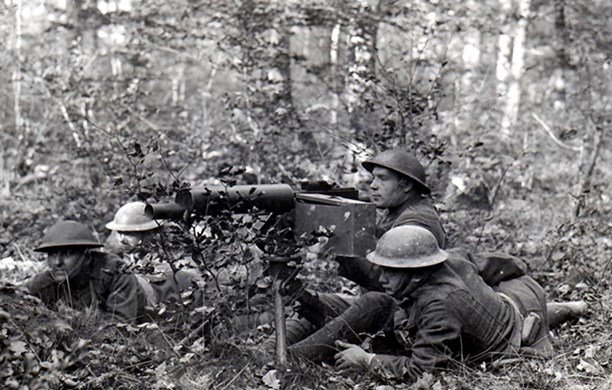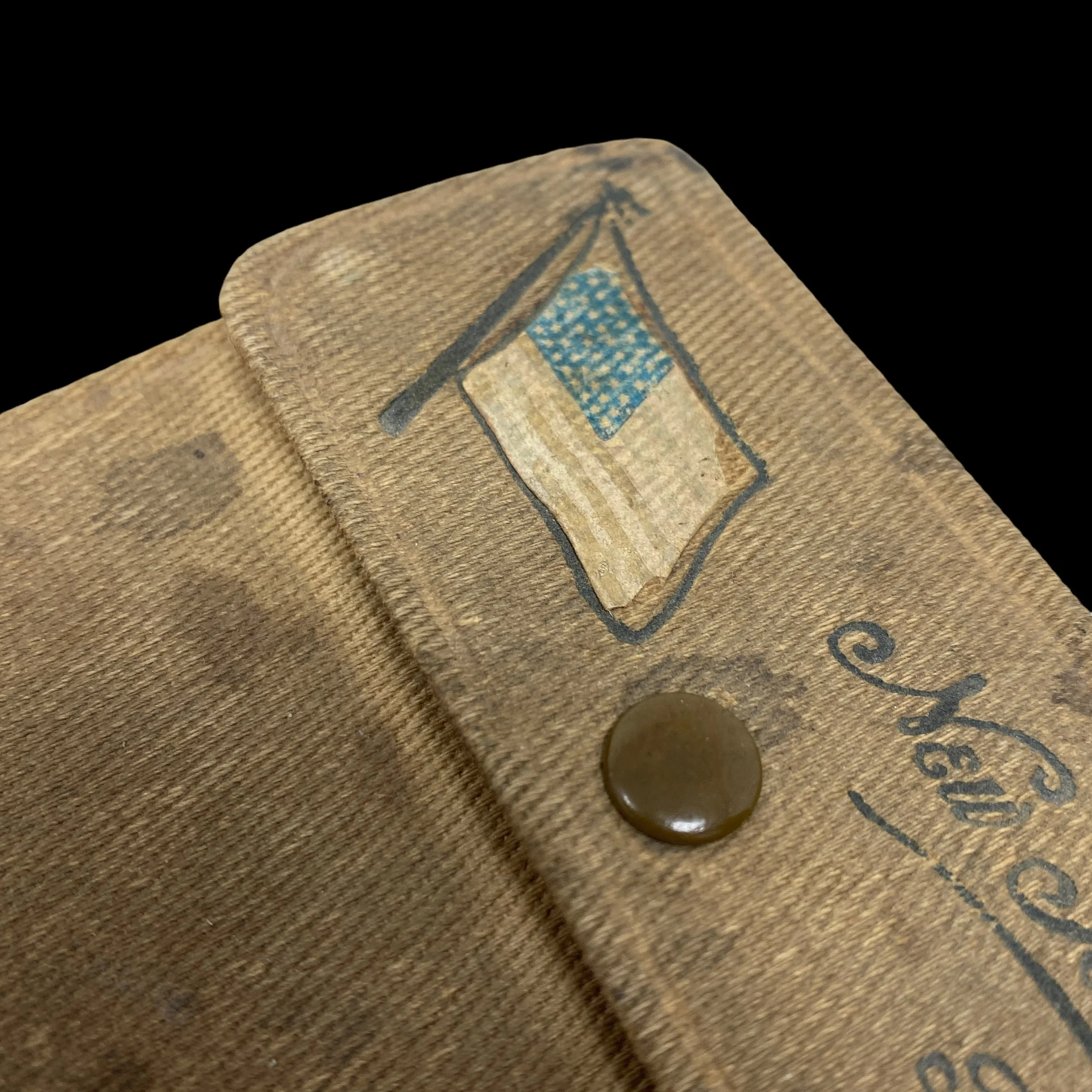RARE! WWI Frederick W. Butler A.E.F. Soldier's Bible - 27th Machine Gun Battalion - 18th Infantry Brigade (46th and 68th Infantry) *











































RARE! WWI Frederick W. Butler A.E.F. Soldier's Bible - 27th Machine Gun Battalion - 18th Infantry Brigade (46th and 68th Infantry) *
Comes with a hand-signed C.O.A.
This extremely rare and museum-grade World War I American Expeditionary Force (A.E.F.) soldier’s personal bible was carried by a named A.E.F. soldier (Frederick W. Butler) of the infamous 27th Machine Gun Battalion. During WWI the 27th Machine Gun Battalion was attached to the 18th Infantry Brigade (46th and 68th Infantry).
Machine Gun Battalions during World War I: A Tactical Evolution in Modern Warfare
World War I, often termed as the first modern war, introduced unprecedented levels of violence and new forms of military technology and strategy. Among these innovations, the machine gun emerged as one of the most formidable weapons on the battlefield. The development and tactical deployment of machine gun battalions during the Great War marked a significant evolution in warfare, fundamentally altering how battles were fought and contributing to the stalemate of trench warfare that defined much of the conflict.
Origins and Development
The machine gun, invented in the late 19th century, was initially viewed with skepticism by many military strategists who favored traditional infantry and cavalry tactics. However, by the onset of World War I, the potential of the machine gun to inflict massive casualties and fortify defensive positions was recognized, leading to its widespread adoption. The Maxim gun, invented by Hiram Maxim in 1884, was the first self-powered machine gun, capable of firing over 500 rounds per minute. This firepower was unparalleled by any other weapon available to the infantry at the time.
As the war progressed, both the Allies and Central Powers began organizing specialized units around this devastating weapon, forming machine gun battalions. These units were equipped with multiple machine guns and tasked with providing heavy fire support, defending strategic positions, and neutralizing enemy infantry assaults.
Tactical Integration and Employment
The initial stages of World War I were characterized by rapid movement, but by late 1914, the Western Front had devolved into a stagnant war of attrition, with both sides entrenched across from each other in fortified positions. It was in this context that machine gun battalions came to the fore, becoming a cornerstone of defensive tactics. Positioned strategically along the front lines, machine guns could sweep no man's land with deadly fire, making any infantry assault a perilous endeavor.
Machine gun battalions were not just static defenders; they were also integral to offensive operations. They provided suppressing fire to cover advancing infantry, targeted enemy machine gun nests, and broke up counter-attacks. The development of indirect machine gun fire, where guns were aimed to fire over friendly troops and into enemy trenches without direct line of sight, further enhanced their tactical value.
Impact on the War
The effectiveness of machine gun battalions fundamentally changed the nature of combat during World War I. Their ability to inflict catastrophic losses made frontal assaults increasingly untenable, contributing to the stalemate and the horrific casualty figures that characterized the conflict. The Battle of the Somme in 1916 and the Third Battle of Ypres (Passchendaele) in 1917 exemplified the deadly efficiency of machine guns, with tens of thousands of soldiers cut down in futile attempts to breach enemy lines.
The psychological impact on troops facing the relentless fire of machine guns was profound, contributing to shell shock and demoralization. The very sound of a machine gun became synonymous with death, shaping the war experience for a generation of soldiers.
Technological and Tactical Legacy
The extensive use of machine gun battalions during World War I had lasting implications for military tactics and technology. Post-war, the lessons learned from the deployment of machine guns led to further innovations in combined arms tactics, integrating infantry, artillery, armor, and air support in more coordinated operations. The development of lighter, more portable machine guns and the concept of the automatic rifleman stemmed directly from the experiences of the Great War.
Moreover, the war highlighted the need for mobility and mechanization, setting the stage for the development of armored warfare and the prominent role of tanks and aircraft in future conflicts. The tactical doctrines that emerged from World War I, emphasizing the importance of fire support and combined arms, would shape military strategy for the remainder of the 20th century.
The emergence and tactical integration of machine gun battalions during World War I represented a significant evolution in the art of warfare. Through their devastating firepower and defensive capabilities, these units played a crucial role in the dynamics of the conflict, contributing to both the stalemate on the Western Front and the horrendous casualty figures. The legacy of machine gun battalions, however, extends beyond their immediate impact on the battlefield. They spurred military innovations and doctrinal shifts that would influence combat tactics for decades to come, embodying the transition to modern, mechanized warfare. As such, the history of machine gun battalions during the Great War is a testament to the transformative power of technology in the art of war, marking a period where the machinery of death reached an unprecedented scale, forever altering the human experience of conflict.